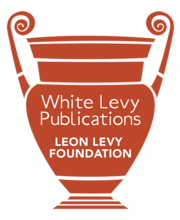Shimon Gibson

The Mount Zion Expedition, Israel
Mount Zion comprises the south-western hill of Jerusalem, i.e. the general area of the present-day Armenian Quarter in the Old City and the area of the traditional Tomb of David which is located outside the walls to the south. n the Iron Age (eighth to sixth centuries BC) the hill was first incorporated into the city and a new fortification wall was erected along its edges; prior to this time the settled area was situated exclusively in the area of the "City of David". During the present excavations on Mount Zion the following Iron Age remains were discovered: dwellings with pottery assemblages, segments of possible fortifications, an industrial building (perhaps a tannery), stone quarries and tombs. The numerous finds include incised potsherds, human and animal figurines and "lmlk" stamped handles and an array of pottery. In the Late Hellenistic period (late second century BC), Mount Zion was incorporated into the Hasmonean city by the construction of the "First Wall". This area, which is referred to by the first-century historian Josephus Flavius as the "Upper City", was substantially rebuilt at the time of Herod the Great. The finds from the Early Roman period from the Mount Zion excavations include: dwellings with well preserved w all paintings of a quality similar to those known from Pompeii, the foundations of the palace of Herod the Great (later the Praetorium used by the Roman governors), and a 200-metre stretch of the fortification wall known as the "First Wall" with curtain walls, four towers and a gateway with a stepped approach. Important finds were also made concerning the Byzantine, Early Islamic, Crusader, Ayyubid and Ottoman periods, with the discovery of a stretch of a paved street which is the same as the one depicted parallel to the Cardo on'the Madaba mosaic map of Jerusalem (mid-sixth century), dwellings from the Abbasid period, and an Ayyubid gateway with a 2.75 metre-long monumental inscription from the early thirteenth century. An enormous quantity of pottery, small finds, and coins were uncovered during these excavations, including a number of rare and important artifacts, such as a sword still in its scabbard from the destruction level of AD 70 and a reliquary cross with artistic representations of saints from the ninth century.
